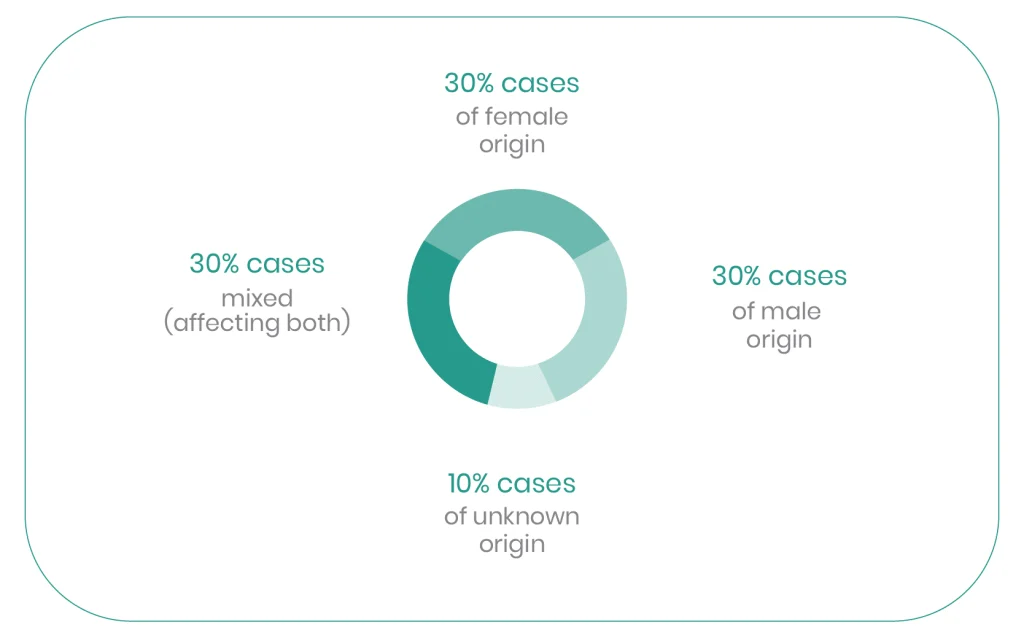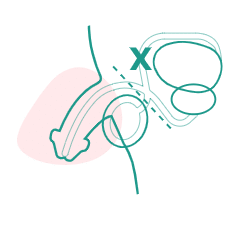Infertility causes
A distinction must be made between sterility, difficulty in achieving pregnancy, and infertility, the impossibility of carrying a pregnancy to term, i.e. in an infertile couple, the woman becomes pregnant without problems but then miscarries. Both terms are often used synonymously to define couples who have problems in having a child.
Infertility is defined as a couple’s difficulty in getting pregnant. It affects 10-15% of couples of childbearing age.
There are two types:
- Primary infertility: when the couple has never achieved a pregnancy
- Secondary infertility: when the couple already has a history of one or more pregnancies
Infertility affects 15% of couples who wish to have children. In 30% of cases infertility is due to both male and female factors, 30% may be due to mixed factors (affecting both) and 10% are of unknown origin.

Female causes
Between 78 % and 85 % of cases of female infertility are mainly due to three causes:

Anovulation:
When the egg fails to be expelled from the ovary, either because it has not been formed or because it has not reached maturity.

Endometriosis:
When uterine tissue is found outside the uterus.
Tubo-peritoneal factor:
When the fallopian tubes are damaged in any way.
Male causes
The causes of male infertility are manifold. To understand them better, they are divided into four groups:
- Pre-testicular
- Testicular
- Post-testicular
- Ejaculation problems
Infertility in men, in general, is related to:

A defect in sperm production:
Decreased sperm quantity and/or quality

An obstruction of the seminal duct

Erectile impotence, absence of ejaculation:
The mechanical impossibility of depositing semen at the bottom of the vagina during intercourse